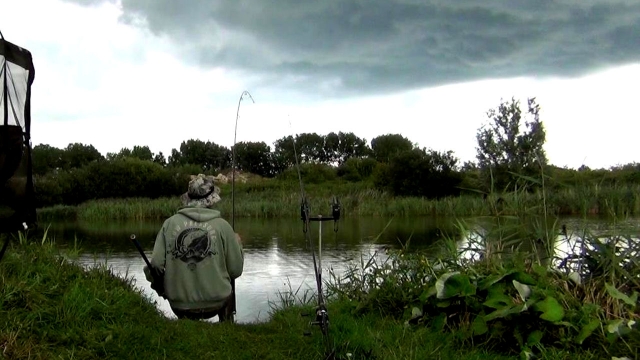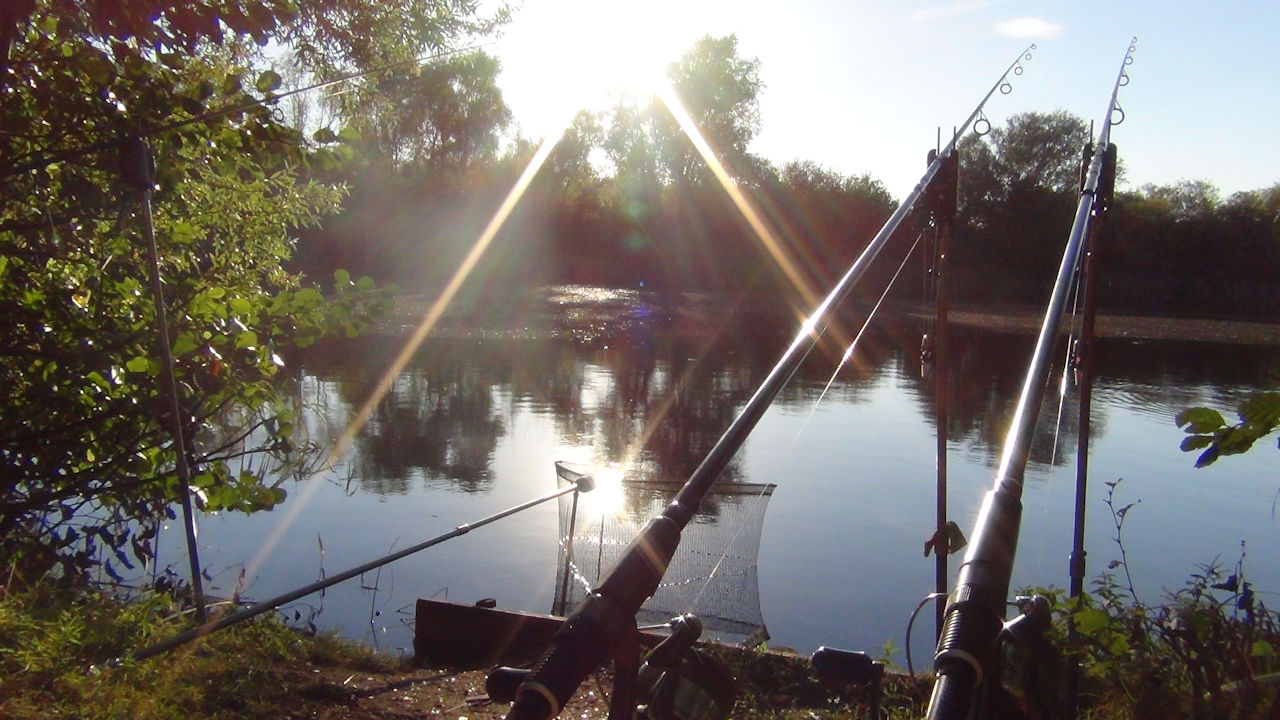
Since I started carp fishing in 1980 I have used many different kinds of rod, lead and rig setup to try and catch carp. In the early 1980's much of my time was spent on a steep learning curve that took me from light 1/4oz running rigs and float fishing to 2-3oz bolt rigs, tight lines, heavy bobbins and high rod positions.
It was a voyage of discovery as I moved from one thing to another trying to figure out what worked and what didn't. Of course I also spent time following trends and using the most effective methods available but even then I would make my own changes and tweaks.
It's a fact that there are some very inquisitive minds out there angling for carp and many different ways of fooling our quarry have come to light; and it's the culmination of using these ideas over the years and doing my own thing which has lead me to where I am now.
Kick back is the nickname I have given to this current setup and it works by suspending and creating elasticity from the rod tip to the lead. This does two main things, it helps to induce a 'kick back' effect when the lead is moved by the carp and it gives a completely different feel to the setup.
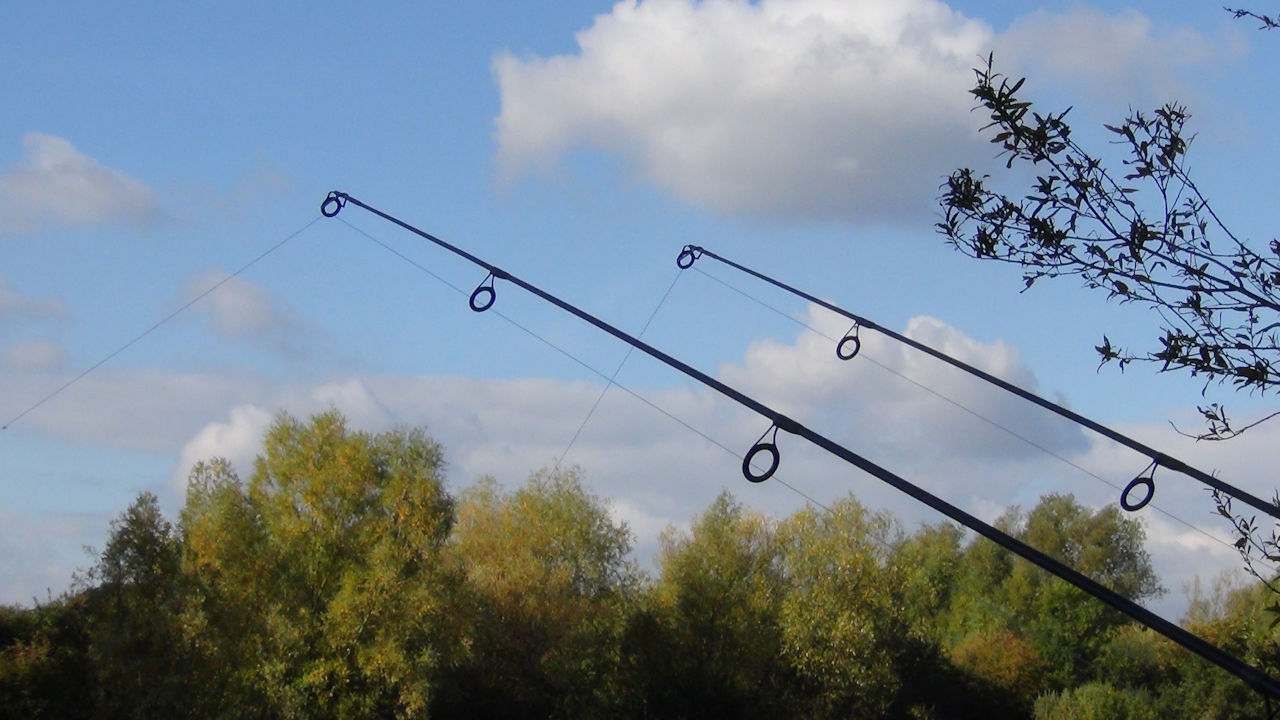
This is the key, and what you're aiming for is a 90° angle between the rod and the line as this will maximise the available compression (bend) in the rod.
You tension the line using this compression in the rod to help with the elasticity of the setup and you hold it all in balance with heavy bobbins.
The greater the angle between line and rod the less effective this setup is which is why I aim for the 90° angle.
The other important factor about having the rods up high is that it lifts the line up and out of the water and suspends everything.
This is a another key point about the setup because when the rig is picked up and the lead moves it becomes suspended between the very high tip and the hook. This creates a completely different feel to the carp and makes it much more difficult for it to deal with.
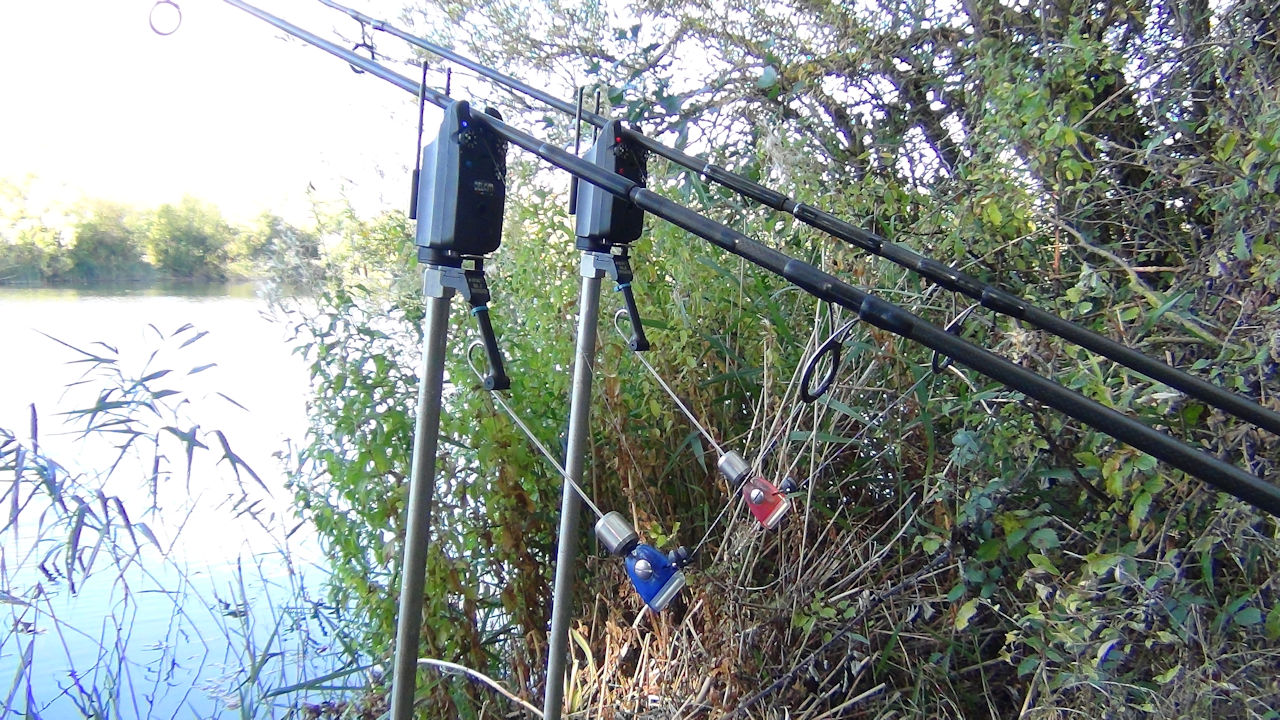
There are five components to the setup, all of which are used to produce the final result
1. A semi-tight line 2. The weight of all the line 3. Resistance upon that line when it's picked up 4. The high rod position and 5. Compression in the rod tip.
Resistance on the line by the mass of water above it can easily be felt, for instance when you pick up a rod to bring in a rig, the rod immediately bends, this is the resistance the carp will feel on a take.
Things that can affect the setup are the depth of the water (resistance on the line), the distance you are casting (the weight of the line), the type of line you are using (weight and stretch) and the test curve of your rod (compression). So basically the shallower the water and the closer you are fishing the less effective things will be.
So with all these variables how do we set it up? Well, I do it mostly by feel and experience!
An easy way of doing this is to set it all up off the compression in your rod tip and the balance of your bobbin.
My rod is 2.12lb test curve and I use a fox swinger with the full 50 gram weight and tighten back the line until the bobbin bounces.
The further out I am fishing the tighter I try to get the line and the higher the rod needs to be; the deeper I am fishing the more I encourage the bow in the line to ensure the leader is on the bottom.
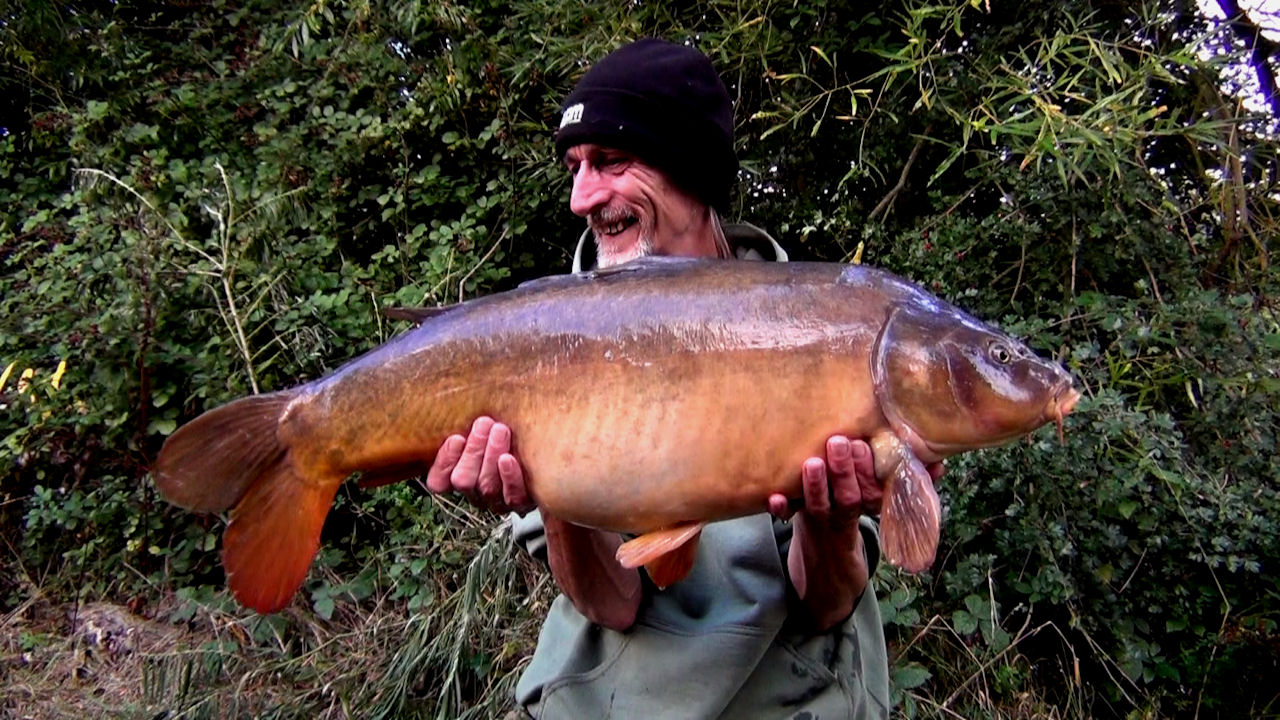
So what happens when the carp picks up the hookbait?
If everything is setup correctly then you should have a slight bend in your rod tip keeping everything under tension but with a slight bow in the line.
The weight of the line and the resistance are helping to hold it down and it's all balanced by the heavy bobbin on the rod end.
When the carp picks up the bait and moves the lead all the tension on the line is released and will pull on the lead causing a 'kick back' and since we are using a high rod tip the whole lot will also now be suspended.
More often than not your first indication will be a short drop back of the heavy bobbin before it either drops back more or races off therefore you should set your bobbins up to show drop backs.
Depending on the reel you use you should set your clutch/bait-runner moderately tight, so when you pull line from the tip, the tip bends before the clutch/bait-runner gives any line.
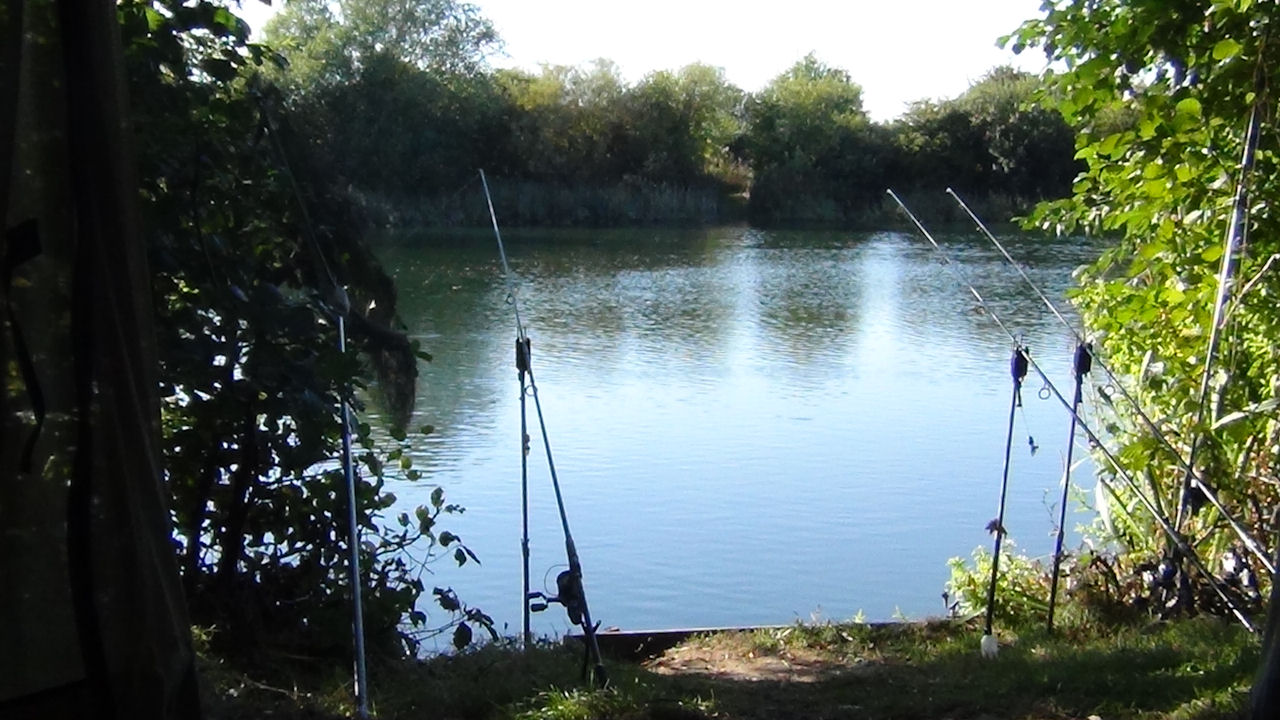
A few observations
Obviously this method is not suited to every situation, close in margin fishing for instance. However it is still beneficial to have the rods up and to have the line semi-tight even when fishing close in. A lot can be said for a captive lead setup and this method combined to try and overcome the distance/weight/resistance/suspension components.
I would say that this method isn't really tackle specific and that anyone with any combination of rod, reel, line could make use of it, all you really need to understand is the value of each component and how they work together and in your favour.
Because of the high position needed by the rod and the nature of the setup this method is best suited to sticks both front and rear. If you think about it you're asking a lot more of your tackle with this setup than the conventional method of placing your rod in a rest.
I use 24 inch Chris Brown banksticks (https://www.cbproducts.co.uk/) for the front and short 5 inch extendable ones from Wychwood for the rear. Experience has taught me however that 36 inch front sticks would be better to overcome the downward incline of banks and the depth you need to push them down to get it all stable.
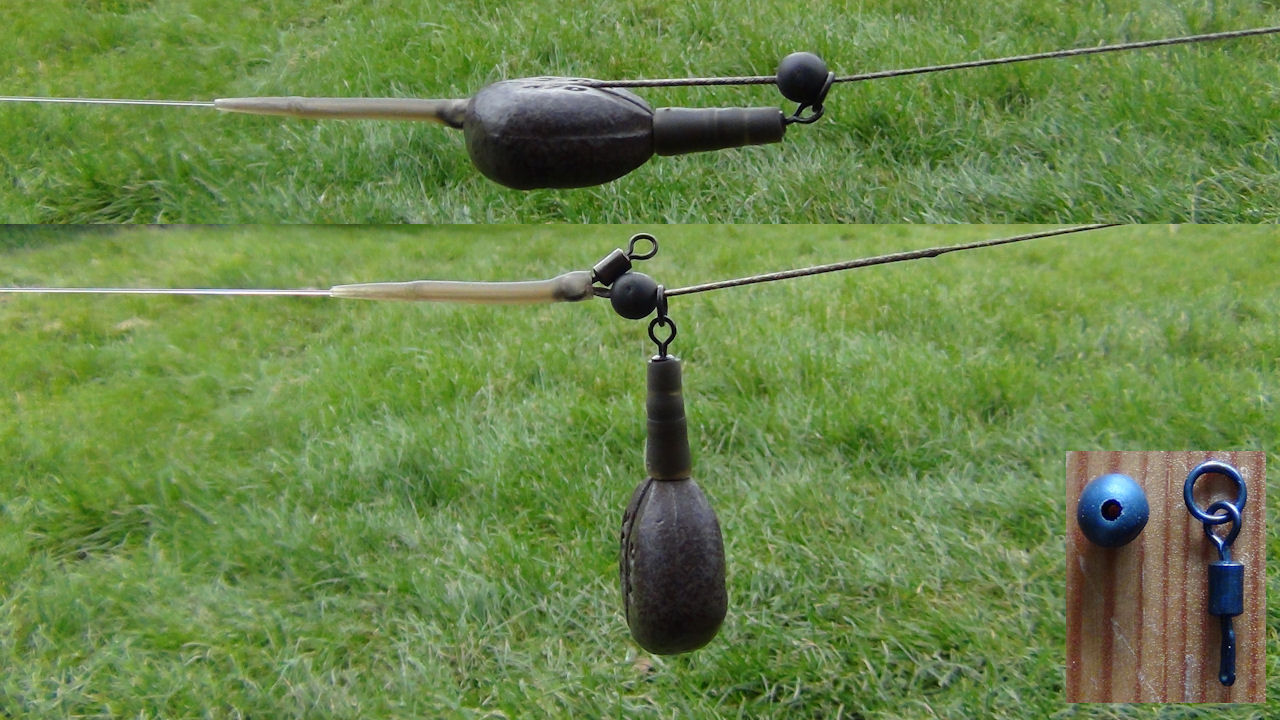
Finally
I personally prefer to use a flat-lead system with this setup (https://thecarpcatcher.co.uk/thecarpcatchers_blog.php?post=229), however I don't see why it wouldn't work with other lead systems.
The leader I use is a one of the leadless weighted leaders and I would expect that to always be on the bottom. I achieve this by letting everything settle after the cast allowing the line to sink. Once I am happy with that I start to tighten up. With time and experience this is easy enough to learn and you end up getting a feel for it.
On waters nowadays you will see many anglers fishing the same low rod, parallel position with slack lines and whilst this is a successful setup, the carp have become very used to it. This method presents them with something very different and it's accounted for an awful lot of fish for me this season.
Happy fishing guys!
For more information follow the tags and to see it in action watch these films:
The Woolpack lake 8 (https://thecarpcatcher.co.uk/thecarpcatchers_blog.php?post=419&tag=film)
Nickolls lake - Hythe 2015 (https://thecarpcatcher.co.uk/thecarpcatchers_blog.php?tag=nickolls-lake)


